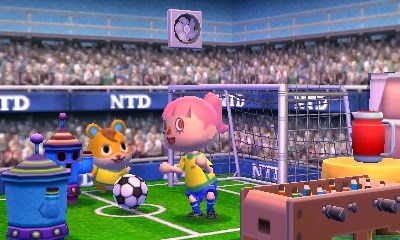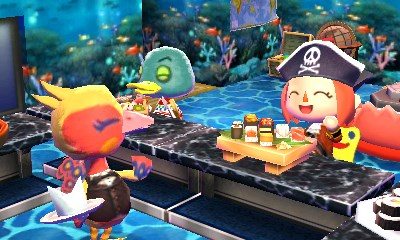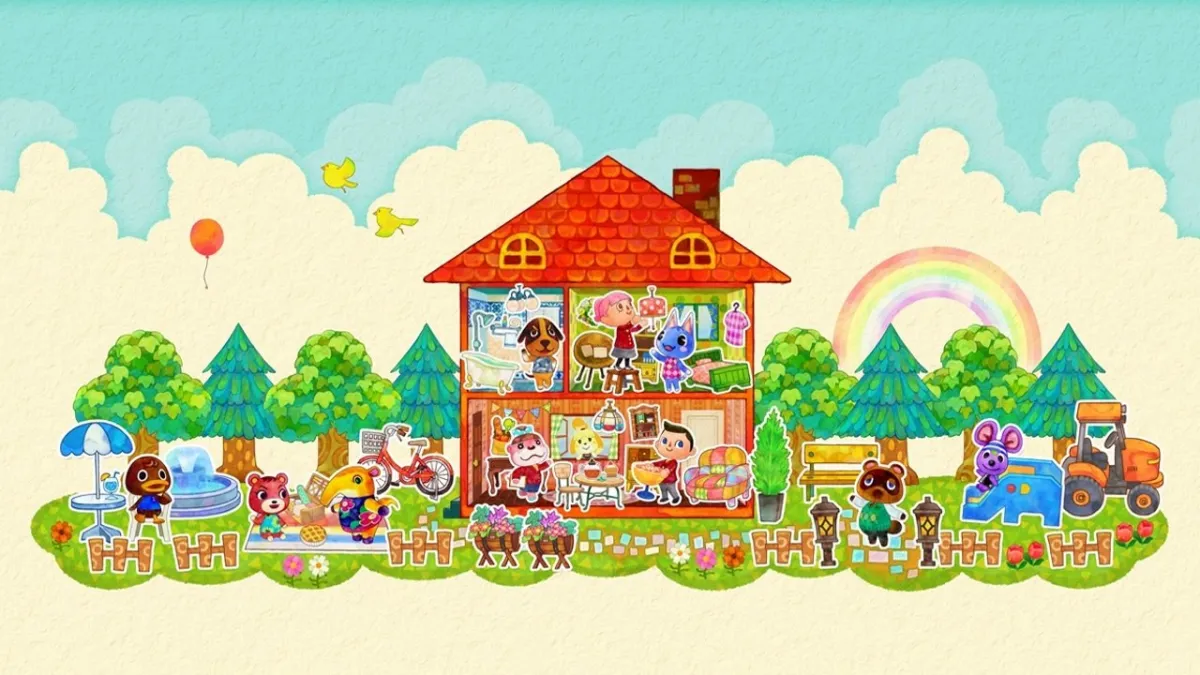The Animal Crossing series is something of an enigma in the video game world. Featuring a world filled with colorful characters, the game tasks players with nothing in particular, instead allowing them to live out a life as they see fit. Of course, there have always been objectives, such as collecting items, fishing, or making money, but these were all optional and kept out of the player’s way if they weren’t all that interested. The new spin-off Animal Crossing: Happy Home Designer is a bit of a departure though, taking one major element of the series and expanding it, while making it the central focus of an entire game. While the new mechanics are certainly an improvement over the slapped together elements found in Animal Crossing proper, the end result is that of a half-baked game that doesn’t do enough to justify itself as a standalone experience.
Animal Crossing has always placed you in the shoes of a newly arrived villager, and Happy Home Designer is no different here. You are the latest employee of Nook’s Homes, a design company run by everyone’s favorite despotic raccoon. Your job is to take advice and requests from random villagers and then to design a home to their exact specifications. Do it correctly and they’ll love you, do it wrong and…well, they’ll still love you.
This is the first true sign that something has gone wrong with Animal Crossing: Happy Home Designer, the fact that there is no challenge to it whatsoever. As a designer you are given a general idea of what the customer wants, they’ll usually have a few items in the house already, which you’ll need to incorporate into your design in some way. Then they’ll add in a bit of flair, such as that they like everything to be as cute as possible, or they wish to live in a city-style environment.

These requests unlock new items that fit whatever theme the customer is going for, but as the designer you are free to completely ignore everything about it. You do not need to use the items that were unlocked, and you do not need to actually design a home that fits the request provided. If the villager asks for something cute, you can fill the home with cockroaches, and cover the walls and floor in stark blackness. Once you’ve announced the completion of your design the customer will exclaim in joy at what you’ve done, whether it actually looks good or not.
This does give the game a certain amount of freedom, which admittedly is a theme of the Animal Crossing series, but there has also always been a bit of work that can be done to maximize your results. Feng Shui, for example, would have been an excellent piece of the Animal Crossing: Happy Home Designer puzzle, pushing players to get everything in its proper place in order to please the customer more. Or perhaps furniture could have had a price tag attached, forcing players to manage their Bells as they do in the main games. Instead Nintendo has stuck to the freedom model, making Animal Crossing: Happy Home Designer feel especially hollow as a result.
Thankfully there is more to the game, and while it isn’t particularly challenging, it does offer up some new pieces of gameplay to enjoy. Isabelle will eventually show up in the Nook’s Homes office, asking you to help design the buildings that will be featured on Main Street. A school, a shop, a hospital, and more can all be built from the outside in. These have a few more requirements, such as the school making sure there are actual tables and chairs for the students.
However, once you’ve checked these boxes you are free to stop or to make the rooms into whatever you wish. This can be fun the first few times, as you fill the hospital up with chairs that look like watermelons, or make a school whose sole seating options are toilets. Once this novelty wears off though, and it does so rather quickly, the game becomes a matter of simply loading the requisite items and moving on to the next task.

There are a grand total of over 300 individual villagers that you can design homes for in Animal Crossing: Happy Home Designer, but each one feels the same, from the first to the last. By the end of the game you’ll have a much wider assortment of decorating options, with literally hundreds of items available to choose from, but unless this home design mechanic alone is enough for you then Animal Crossing: Happy Home Designer won’t keep your interest for long.
That home design mechanic is very much improved over its base game counterpart
Luckily that home design mechanic is very much improved over its base game counterpart. No longer will you have to drag furniture around and rotate it at a snail’s pace. Instead you have the entire floorplan open to you on the touch screen. Select an item and click and drag it to wherever you want. Rotating it is as simple as a quick tap with the stylus, and by holding a button you can duplicate any item already in the room. It feels extremely fast and natural, and should definitely be the way you fill your home in future AC games.
On top of this you have more options available in terms of the home itself. You can design the outside, down to which door is used for the facade. You can add on rooms, and shape them to your liking, at least, once you’ve went through the requisite training.
This training was a bit of an odd choice, as it is hidden away at your desk, where you go to close out the day and save (yes, the extremely enjoyable real-time aspect of the series is gone here too). It requires the use of Play Coins, those things you earn by carrying your 3DS with you all day, and usually blow on StreetPass items. Their importance wasn’t really made clear in the game, but players will want to be sure to run through them as they unlock entire sections of the game.
Other items were carried over from the main Animal Crossing series, but few had as many improvements made as the design aspects. Animal Crossing: Happy Home Designer still has a ton of colorful and fun characters to interact with, and there is some great writing involved in the game, as usual. However, things are very much pared down here, as the simple act of interacting with other villagers isn’t a main focus. Instead you’ll find your conversations taking on a very business like tone, with customers asking things of you, and you doing whatever you want afterward.

Amiibo play a big part in Animal Crossing: Happy Home Designer, but not in a a very mixed way. If you’re a huge enough fan of the Animal Crossing series to have favorite characters then you might want to snag their Amiibo or Amiibo card. This allows you to import them into your game, fulfilling their home design request, and then being able to visit with them in their home, or someone else’s. It still feels a bit tacked on, but for those with a devotion to a specific character it will bring some extra excitement to the affair.
These visits to already created homes also bring some additional options, such as posing characters and taking pictures. Most players will likely skip over this aspect, but for those that dive into it, posing characters just right, getting that perfect shot, and then posting it to Miiverse, it too will add some fun to Animal Crossing: Happy Home Designer.
The Verdict
Animal Crossing: Happy Home Designer is far from a bad game, but it is a game that is so laser focused on one aspect of a usually expansive series that it will likely disappoint most players. Unless you spent all of your time in Animal Crossing’s many other entries gathering up furniture and arranging it just right, you’ll find little to love in Animal Crossing: Happy Home Designer. The design aspects have been improved, and there’s still a lot of colorful characters to interact with, but the base experience is just too hollow to garner as much love as past games. If only there was some sort of challenge, something that could help propel players forward with a goal of sorts, but with that absent, Animal Crossing: Happy Home Designer feels like a spin-off that can’t live up to the original.











Published: Sep 22, 2015 08:59 am